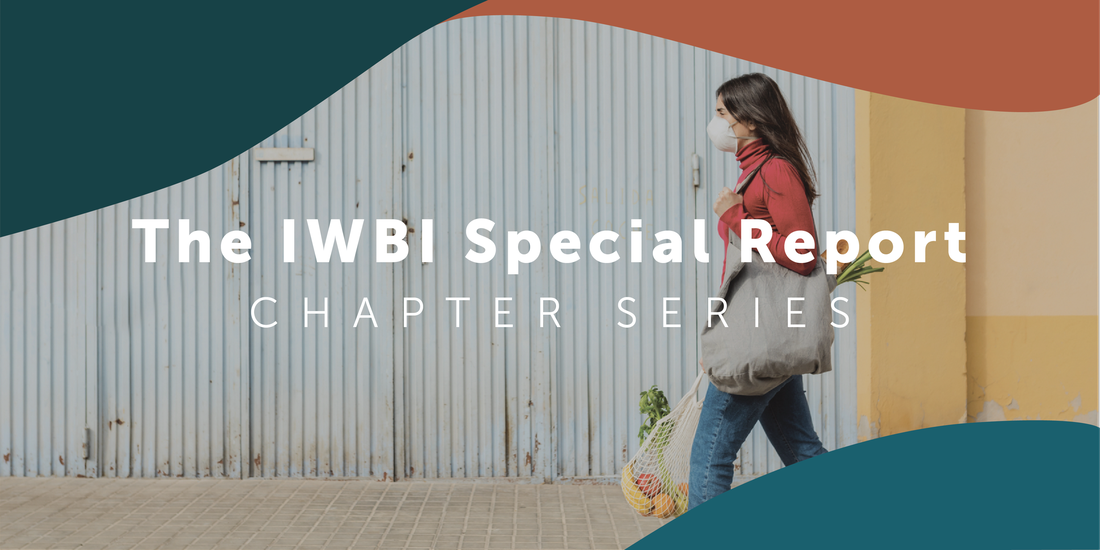The IWBI Special Report Chapter Series: “Investing for Health”

The IWBI Special Report Chapter Series
Excerpt republished from: Prevention and Preparedness, Resilience and Recovery: An IWBI Special Report
When a company like CVS Health affirms “health is everything” in its Corporate Social Responsibility (CSR) Report, there’s no ambiguity about how it values health.
Its 2019 CSR report—thematically focused on the priority areas of healthy people, healthy business, healthy community and a healthy planet—utilizes a thorough assessment of materiality factors, such as “access to quality health care,” “employee health and safety” and “diversity, equity and inclusion” to track progress toward its goals.1 If only a similar approach rooted in health was more ubiquitous across all of business and equally asserted by the investment community.
Instead, health and well-being are routinely underreported by companies and often undervalued or misunderstood by investors who evaluate those companies. That’s a missed opportunity—because the fact is, the health and well-being of a company’s employees significantly affect its bottom line. One peer-reviewed study in 2016 showed portfolios composed of companies that scored high on Corporate Health Achievement Awards (CHAA) appreciated by 204 percent to 333 percent compared to the S&P 500 Index appreciation of 105 percent. Another study, also from 2016, compared 45 companies that received high scores in a health and well-being assessment and found they appreciated by 235 percent compared to just 159 percent appreciation of the S&P 500 Index over a six-year simulation period.
Before the pandemic, these benefits might have been known only to those who knew to look for them. Employee health was typically considered a peripheral and altruistic concern, which could at best attract higher quality talent and reduce turnover. But the current global health crisis has helped make clear that protecting worker health and ensuring employee resilience are key to any organization’s ability to succeed. That newfound awareness has the potential to bring health to the forefront of the investment world in a way it never has been before.
According to Mona Naqvi, head of ESG Index Strategy for North America at S&P Dow Jones Indices and an IWBI Governance Council member, “Companies are being put under the microscope like never before regarding public health issues and the way they treat their employees. The COVID-19 issue is providing us the roadmap and the blueprint to better integrate a more systemic and holistic understanding of health as it relates to the markets. This crisis has demonstrated the materiality of public health.”
Health Underpins all of ESG
Modern day investing—advanced most notably by Environmental, Social and Governance (ESG) factors and frameworks—has demonstrated time and time again how these non-financial indicators lead to improved company performance. In 2015, in a massive meta-analysis of about 2,200 studies focused on the link between ESG criteria and corporate financial performance (CFP), researchers’ key takeaway was this: “Investing in ESG pays financially.” And investors have responded accordingly. Morningstar Inc. found that a group of 300 mutual funds that integrate ESG factors into their investment decisions had a four-fold increase in new money, jumping from $5.4 billion in 2018 to $21.4 billion in 2019.
Health was not originally a primary focus of impact investing. But in recent years, that has started to change. In 2018, the WELL Building Standard (WELL) was included in Swire Properties’ Green Bond Framework, with the company anticipating it will turn to WELL Certification to “continue to execute our investment in health strategy across our real estate portfolio,” according to Dr Raymond Yau, General Manager of Technical Services and Sustainable Development and IWBI Governance Council member. In the wake of the COVID-19 crisis, this is exactly the type of solution the market is hungry for.
And this was before the global pandemic and the ensuing onslaught of COVID-19 infections around the world. Now, as health has catapulted to the top of everyone’s priority list, we see a new urgency around health across the investment landscape—from impact investing to ESG reporting.
“Environmental, social and governance investing was growing in popularity before the virus began to circulate, as investors flocked to companies that have taken steps to manage non-financial risks related to matters such as climate change, board diversity or human rights issues in the supply chain,” wrote Kristin Broughton and Maitane Sardon in the Wall Street Journal in late March 2020. “But the pandemic has demonstrated on a large scale the importance of other factors that are paramount to ESG investors. Among them: disaster preparedness, continuity planning and employee treatment through benefits such as paid sick leave as companies direct employees to work from home.”
Excerpt: The Future of Investing for Health
…As we go from COVID-19 response to recovery (and even to resilience), investing for health must be part of the answer. We’ll get there much faster if we do more to accelerate these strategies: sharpen our ESG reporting to better reflect health, leverage this moment to ensure we think ahead and build back better, prepare for what’s next and foster leadership.
Detailed recommendations include:
- Improve reporting…
- Create financial incentives…
- Build Back Better…
- Be ready and prepared…
- Foster leadership and model resilience…
Thriving Companies, Thriving People
In a post-COVID-19 world, it will be hard to imagine an investment landscape that doesn’t fully account for the value of health and well-being. Making the right choices now will not only reverberate across the entire investment community but will transform the future of investment and how it works for all people.
The good news is we are seeing the emergence of an investing for health leadership cohort—pioneering investors and businesses alike who don’t just say their people are their greatest asset but act on it.
Because, in the end, what Daniel Malan stated five years ago still holds true: “If a small group of early adopters can lead the way, there are short-term gains to be made and the long-term impact will be substantial.”
Read the full section here.

